Does potatoes need full sun for growth? This is a common question asked by new farmers and growers who own potatoes and have no experience in growing them. Since all kinds of plants require specific conditions to grow best, this is a valid question. However, no need to worry we will solve all of your queries.
Read on to learn the proper way to grow potato plants, the different types, and the quantity of sunlight they require. Let’s get started!
Contents
An Insight Into 3 Types Of Sunlight For Potato Growth
Sunlight is essential for potato plant growth, but only at a particular intensity. This is necessary for photosynthesis to take place. Let’s take a deep dive into its types.
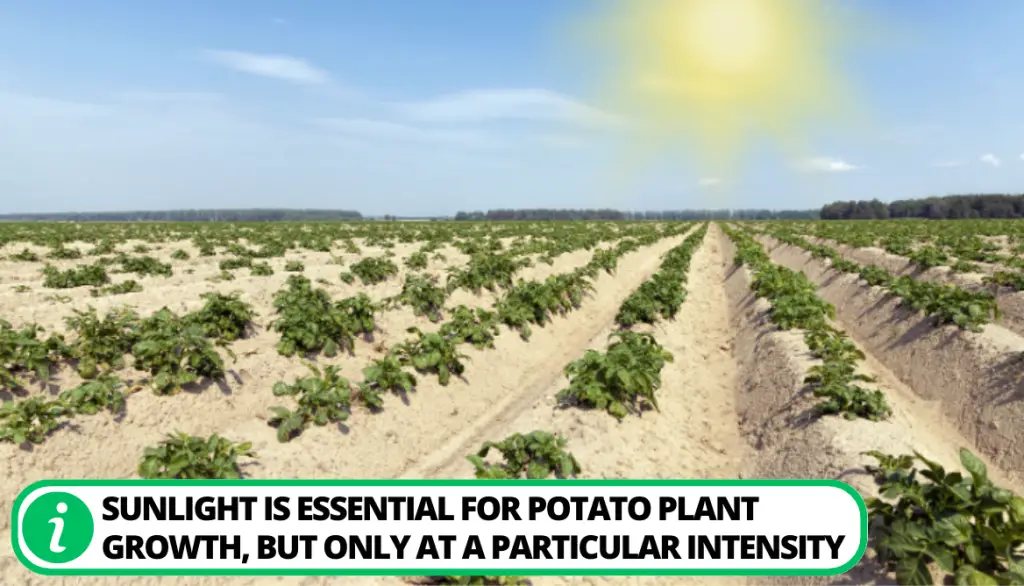
1. Full Sunlight
Full sunshine refers to areas of your garden that receive at least six hours of daily sunlight. In the northern hemisphere, where the sun rises and sets later, plants that need direct sunlight should be exposed to sunlight for at least eight hours every day.
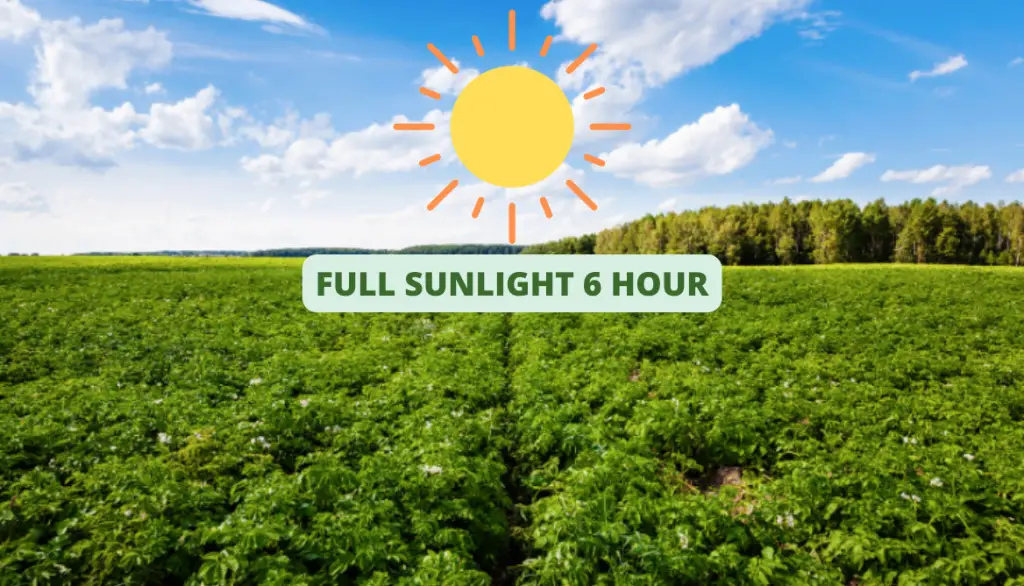
2. Partial Shade Sunlight
Partial sun and partial shade are both descriptive of locations that receive between three and six hours of daily solar radiation. But, note that these areas are in the shade for most of the day.
Some regions are partially shadowed all day long, while others receive filtered or dappled sunshine.

3. Full Shade Sunlight
Full shade refers to those sections that get no more than four hours of sunlight every day. Even if a plant specifies complete shade, giving it at least 2 hours of sunlight a day will boost its growth and flowering.
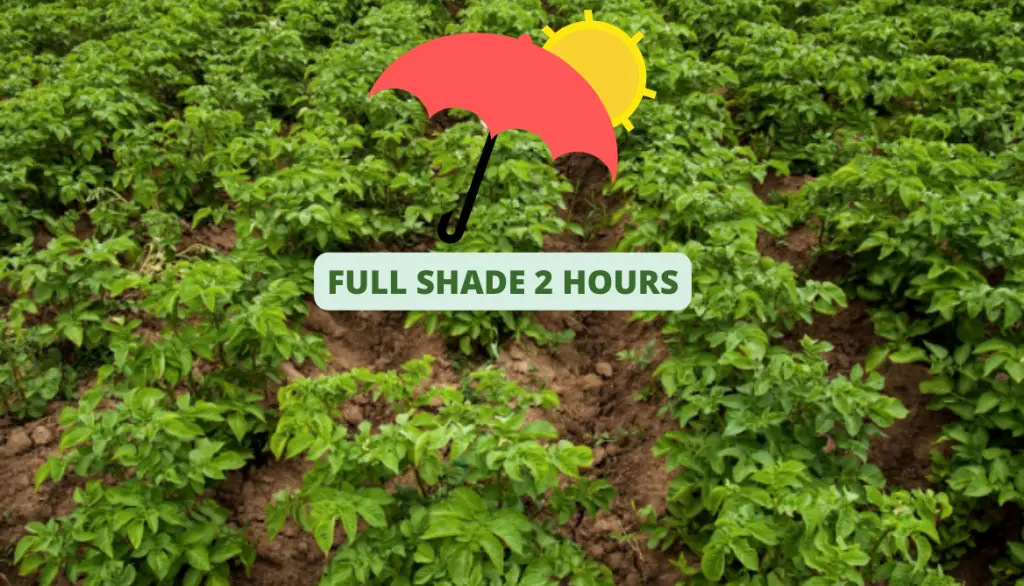
How Much Direct Sunlight is Required to Grow Potatoes
For successfully growing potatoes, it is important to keep the soil moist. In addition, it must be healthy, loose, and well-drained, and the area must receive at least six hours of natural sunlight every day. Also, soil acidity (pH 5.8 to 6.5) and warmth (at least 45 to 55 F) are optimal conditions.
Benefits of Direct Sunlight for Potato Growing
Growing potatoes in direct sunlight has several advantages:
- Root development: It is aided by exposure to full sunshine, which also encourages top growth.
- Bigger Tubers: Potato plants that receive enough full sunlight produce tubers (used to store nutrients) that are bigger and more numerous.
- Better Photosynthesis: Potatoes benefit most from full exposure to sunlight on their top leaves since this is when photosynthesis occurs.
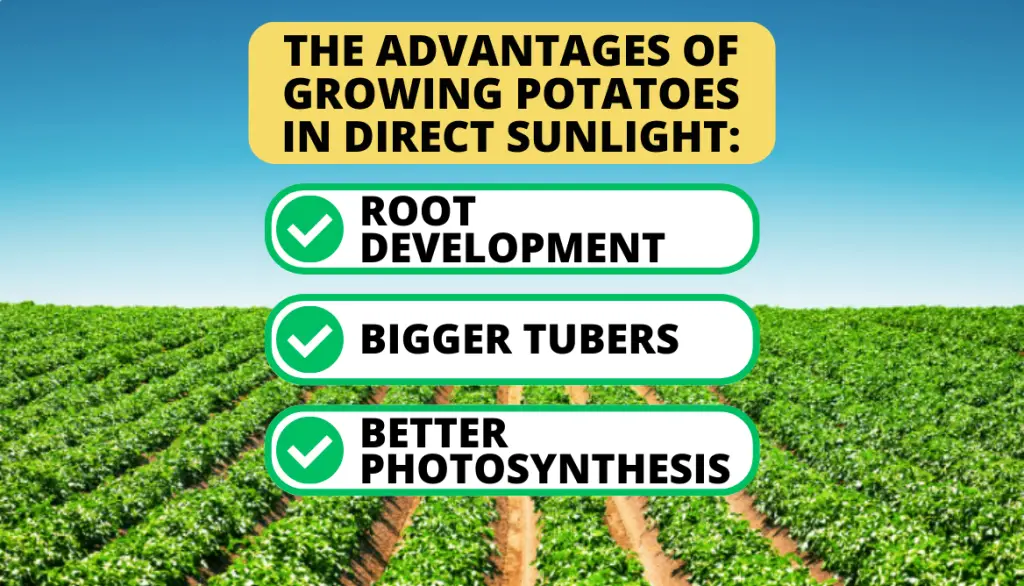
3 Different Potato Plants that Require Sunlight
Potatoes are shared by three categories based on when they are harvested (as opposed to planted):
- Early-season,
- Mid-Season,
- Late Varieties.
Each of these varieties may differ in the amount of sunlight they require since they grow in different seasons. Let’s learn about them below:
1. Early-season Varieties
The early-season varieties are primarily sown in the springtime. The flesh is soft, the skin is thin, and they may be harvested in early summer if you plant them on time. They are planted in early spring and need just 60 to 80 days to mature. Let’s take a look at some:
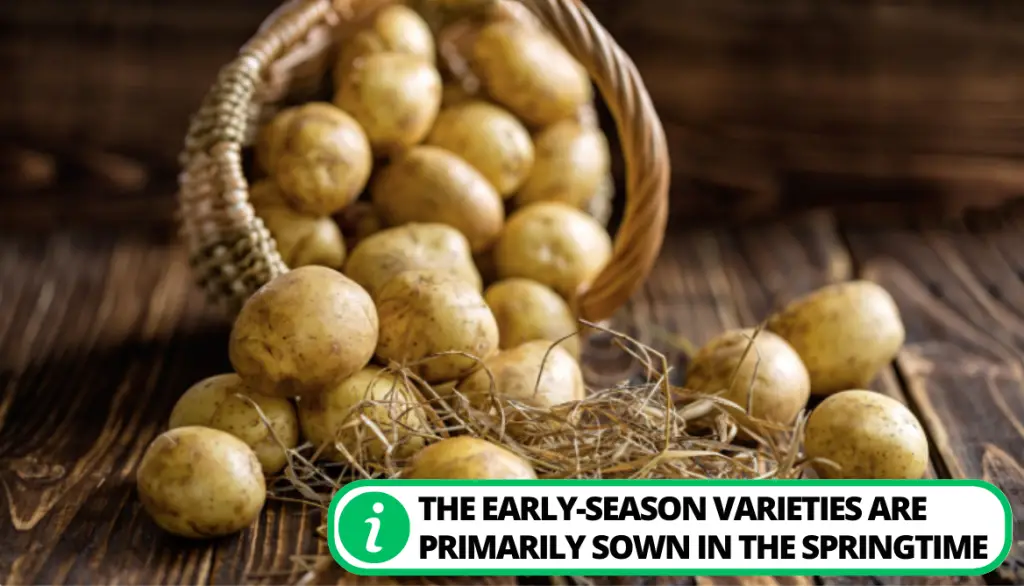
Irish Cobbler
Because of their preference for low temperatures, Irish potatoes grow best in the late winter or early spring and require full and direct sun. Potatoes won’t thrive in the summer’s high heat as the soil temperature will rise, so they need to be picked before it becomes too hot.
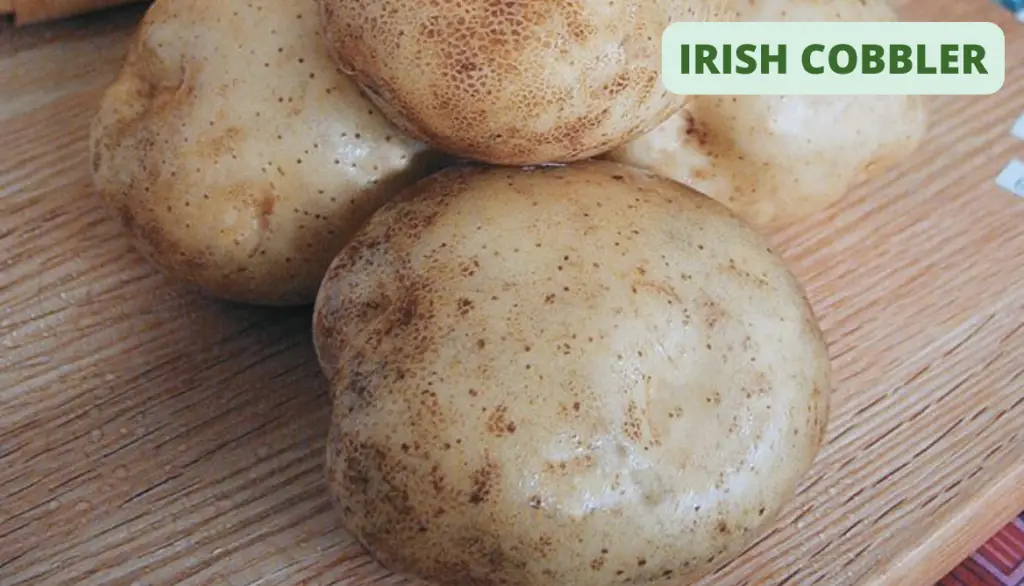
Norland
The crimson peel and white meat of this potato plant indicate an early harvest time. These tasty, eye-catching potatoes are ideal for the fresh potato harvest. Diseases don’t seem to bother Norland Potatoes, and they only need 70-90 days to mature in the garden. The Norland type is versatile, working well in both boiling and roasting processes, as well as in the frying pan.
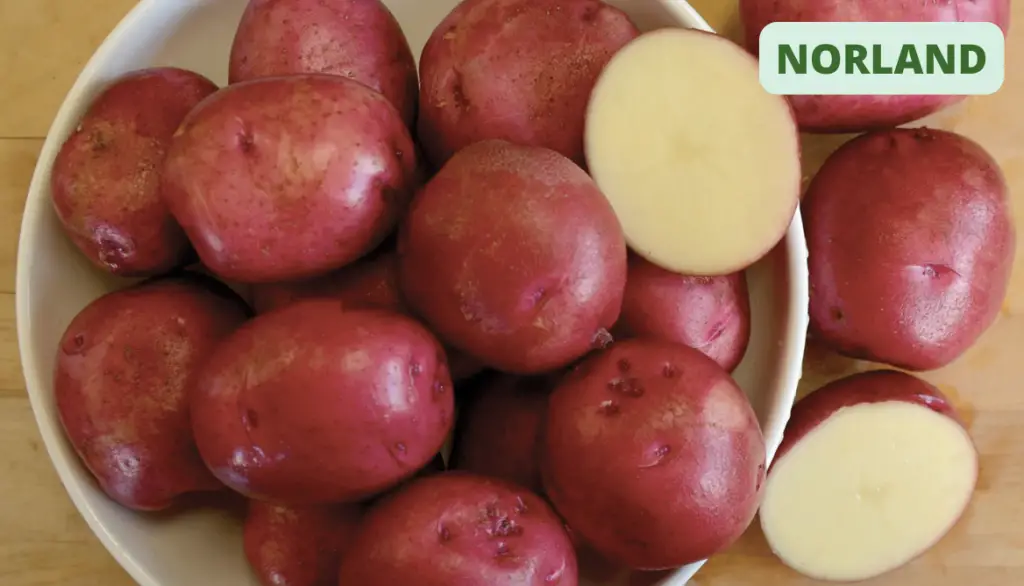
Mountain Rose
This new arrival from Colorado shares the Purple Majesty’s strong antioxidant levels thanks to its similarly colored skin and meat. These potato plants require at least 6 hours of direct sunlight for optimal growth.

2. Mid-Season Varieties
Mid-season varieties are planted in late spring and in 95 and 110 days these potato tubers will be ready to harvest. As a result, they can be picked before the end of the season.
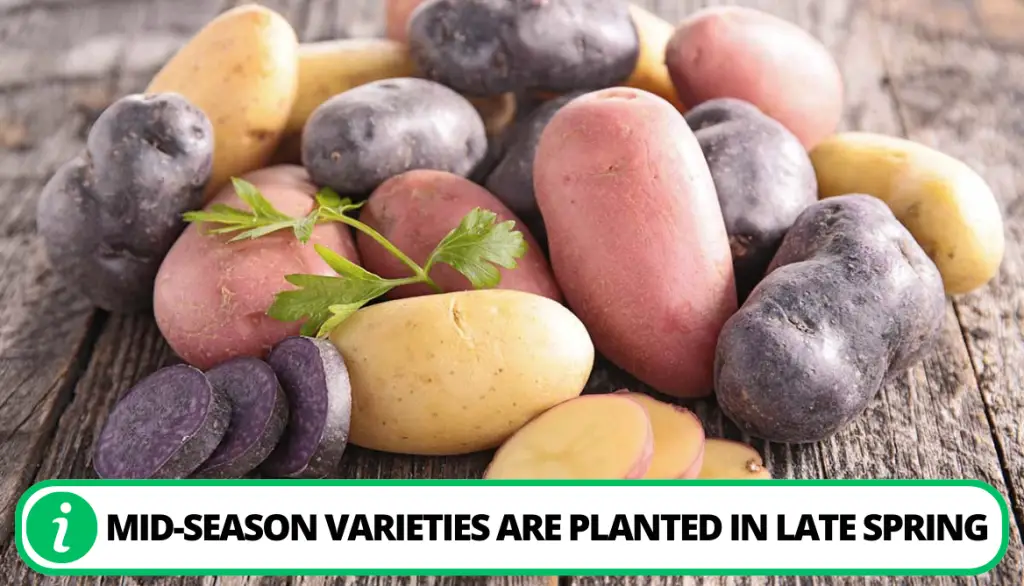
These varieties are a nice balance between the durability of the late varieties and the tenderness of the early-season varieties. Second-early birds are another name for them. Let’s check some varieties:
Red Pontiac
Popular gourmet potato cultivar, Red Pontiac has somewhat sweet white flesh and a thin red peel. These potatoes are especially recognized for their durability in the garden, where they thrive in thick clay soil and may be stored for months.
The harvest time for Red Pontiac potatoes is typically between 80 and 100 days following planting. These potatoes grow best in full sun.
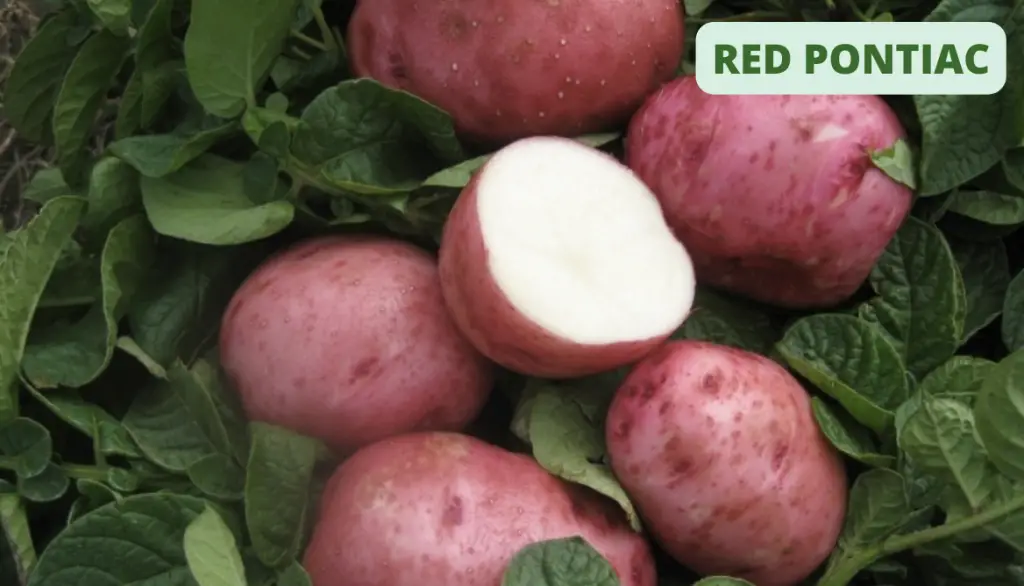
Viking
Because of its preference for low temperatures, Viking potatoes are best planted in the late winter or early spring. They won’t thrive in the summer’s high heat as the soil temperature will rise so they need to be picked before it becomes too hot.
They are also great for potato salads. These seed potatoes grow best in full sunlight.
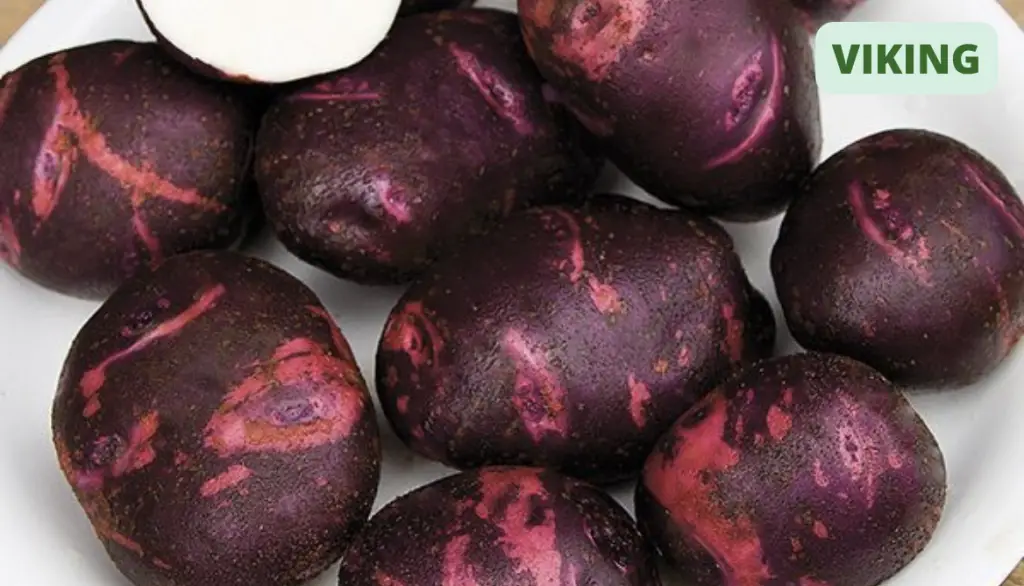
Chieftain
Midseason Red Chieftain potatoes are round to oval in form with red skin, shallow to medium-depth eyes, and white meat. It can be grown in a wide variety of climates, preserves well, and holds its color well when boiled. They require full sunlight to grow best.
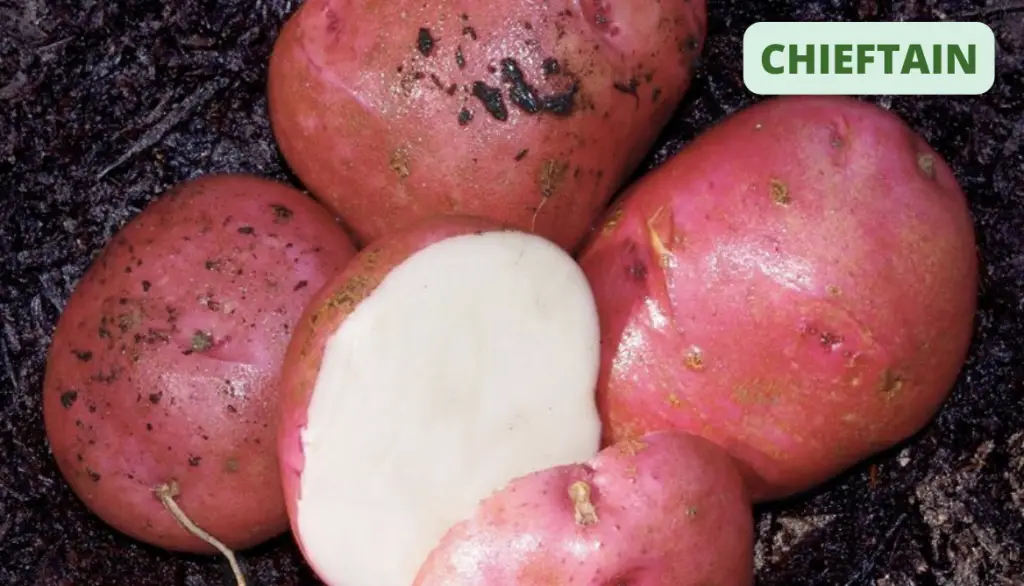
Yukon Gold
A gourmet favorite, Yukon Gold potatoes have creamy golden meat and silky tan skin. When cooked, they take on a buttery aroma and light, dry texture. These midseason determinate potatoes need around 100 days from planting to harvest. They require full sunlight for optimal growth.
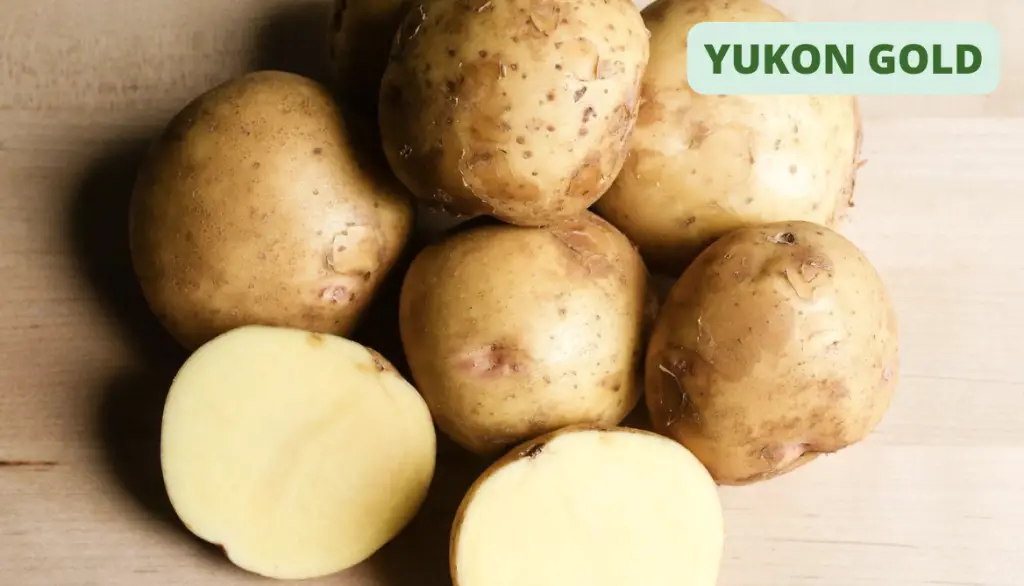
3. Late Varieties
Late varieties are planted in August and about 120 days are needed for late-season kinds to mature, however, the number can also vary between 110 to 160 days. That implies you have to give these tubers plenty of time to develop.
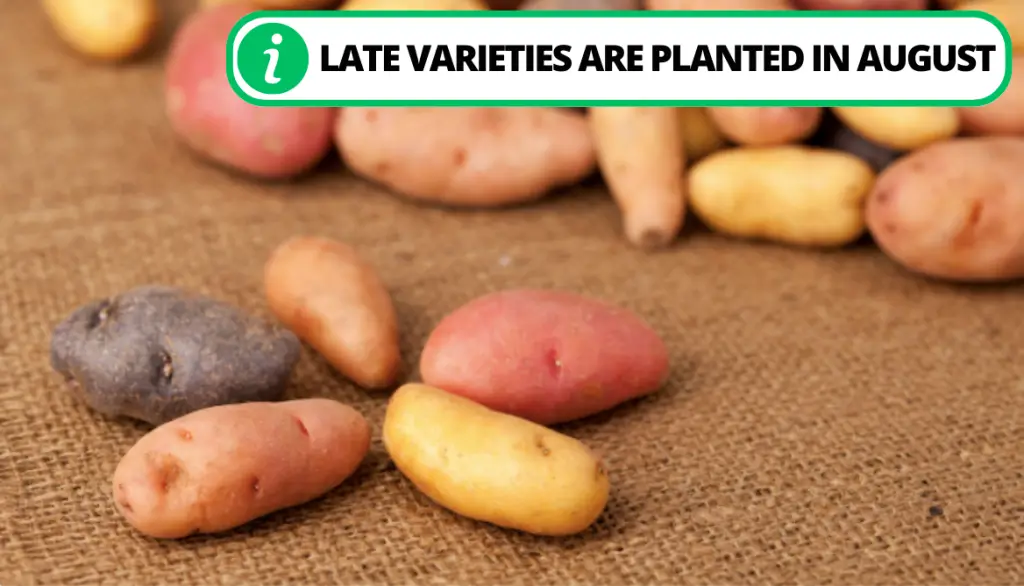
These potatoes keep their quality far longer in storage than regular or early varieties. These are the crops that are typically referred to as “main crops,” and they may be stored for up to three months without going bad. We’ll have a look at a few variants:
Katahdin
Produce high yields of heritage potatoes that can withstand dry conditions, have a long shelf life, and can be steamed, boiled, mashed, or baked. These potato plants have white meat and buff skin, and it takes the appearance of a flattened sphere. The perfect potato for those hearty late-winter dishes.
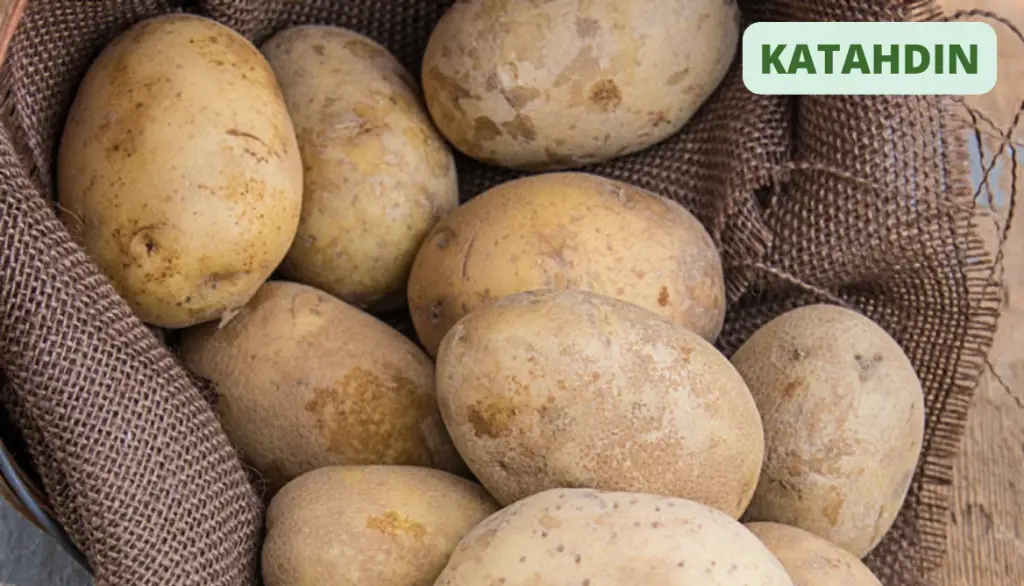
Kennebec
White meat and thin brown skin distinguish the gourmet Kennebec potato. You can bake, boil, fry, or stew these potatoes with ease because of their light, airy structure.
The normal harvest time for Maine’s midseason Kennebec variety is 90 days. While planting potatoes of this variety makes sure they receive full sunlight.
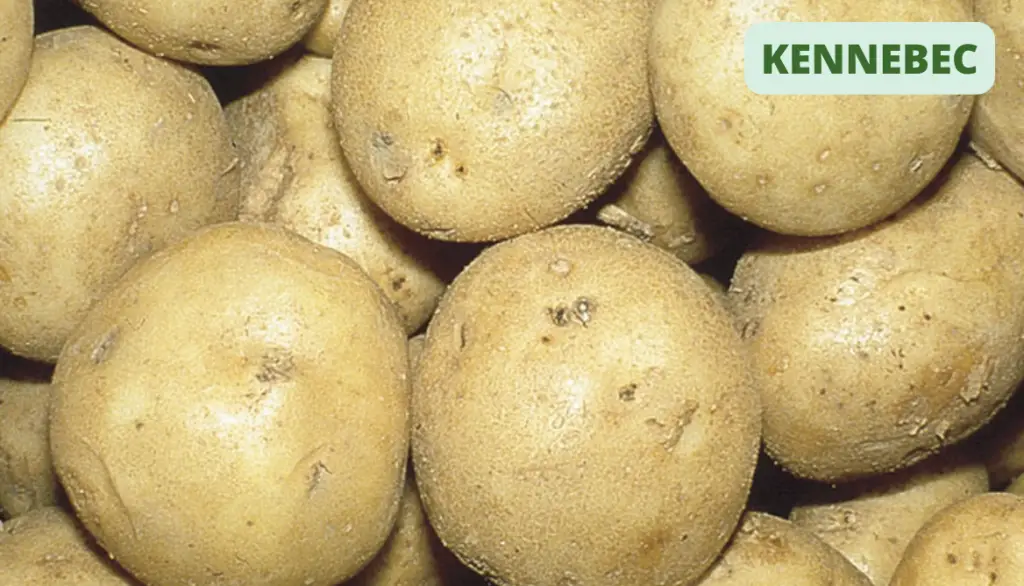
Elba
Large round tubers with buff, peeling exteriors and white meat characterize the Elba variety, which makes them ideal for boiling. Recommended for organic growers because of its high resistance to diseases including scab, early blight, and late blight. Moreover, it requires quite a plenty of space.
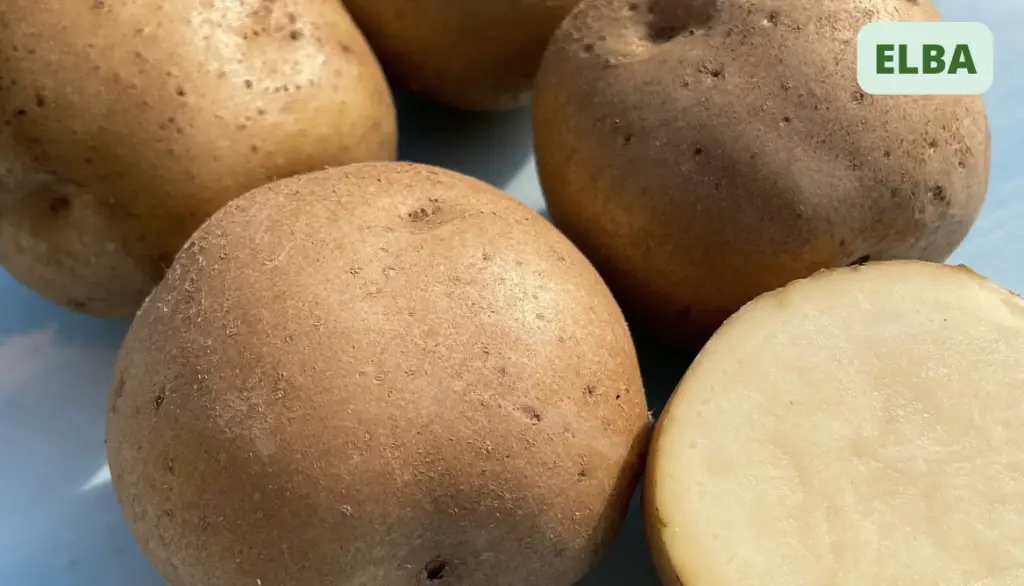
French Fingerling
Among heritage potatoes, French Fingerlings stand out for their outstanding nuttiness and sweetness. Thin, silky red peel covers the bright yellow meat of these 3- to 4-inch-long potatoes.
This type is late-season, needing 95-125 days to mature in the garden. These potatoes grow best in full sunlight.

All Blue
The All blue potato is a spud with purple or blue flesh and skin. There’s a lot of potassium in them. The deep blue hue of these potatoes comes from anthocyanins, a kind of antioxidant. To grow potatoes of this variety be sure to give them plenty of direct sunlight.
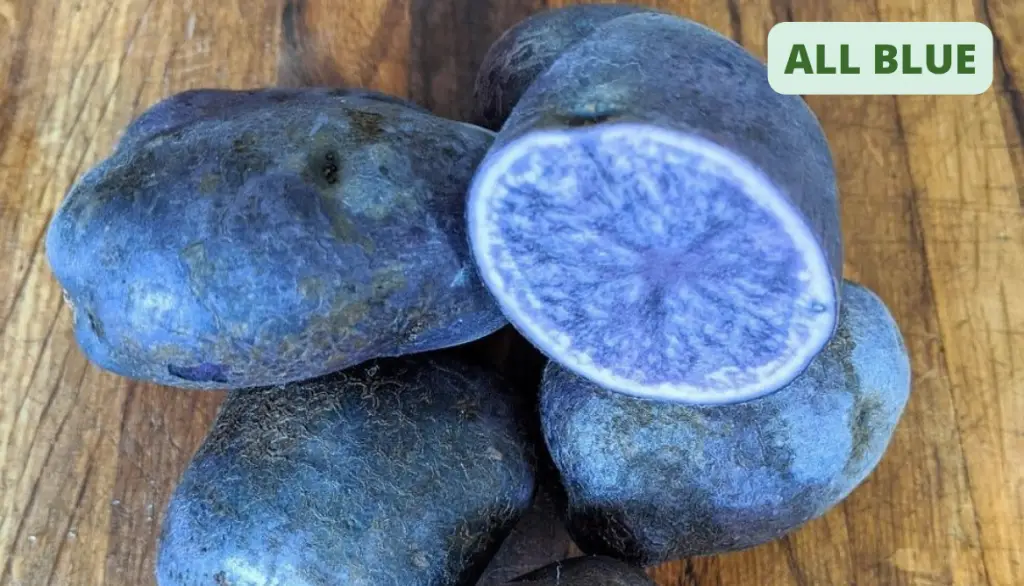
Can Potato Plants Survive without Sunlight?
The short answer would be no. While potatoes can sprout in darkness, they will require access to sufficient sunshine in order to continue developing. Leaves will require exposure to light for photosynthesis as the sprouts emerge from the soil.
2 Best Ways To Plant Potatoes
Gardners often plant potatoes in the middle to late spring. Here is a rundown of important highlights for planting:
- Cut potato pieces should be planted with the cut side down.
- Separate them by a minimum of 12 inches on all sides.
- Spread two teaspoons of a high-phosphorus, low-nitrogen fertilizer in between the spaces. Then, add another 2 inches of dirt on top of the potatoes and fertilizer, and water thoroughly.
- Harvest them when the potato leaves begin to wilt.
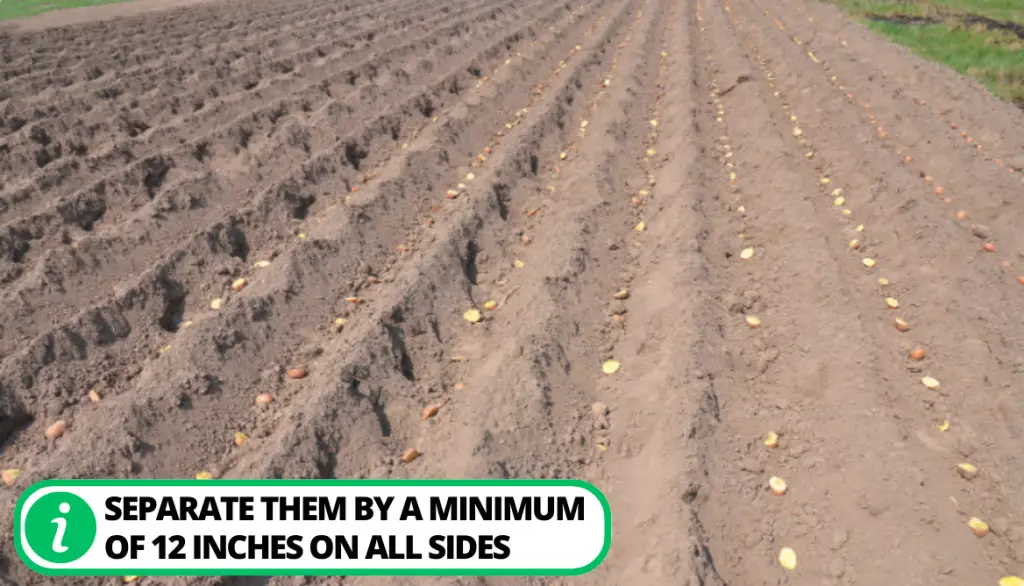
There are 2 ways to plant potatoes. They are as follows:
1. Trench Method
Listed below is a trench method:
- Plant seed potatoes in a shallow trench that has been dug to a depth of about 6 inches.
- The potatoes should be buried under a few inches of dirt. Hilling up the dirt along the edges of the potato plants is a constant process during the plant’s growth.
- As soon as the potato plants reach a height of four to six inches, topdress the mound with dirt. When they start to bloom, you can stop ridging up the soil.
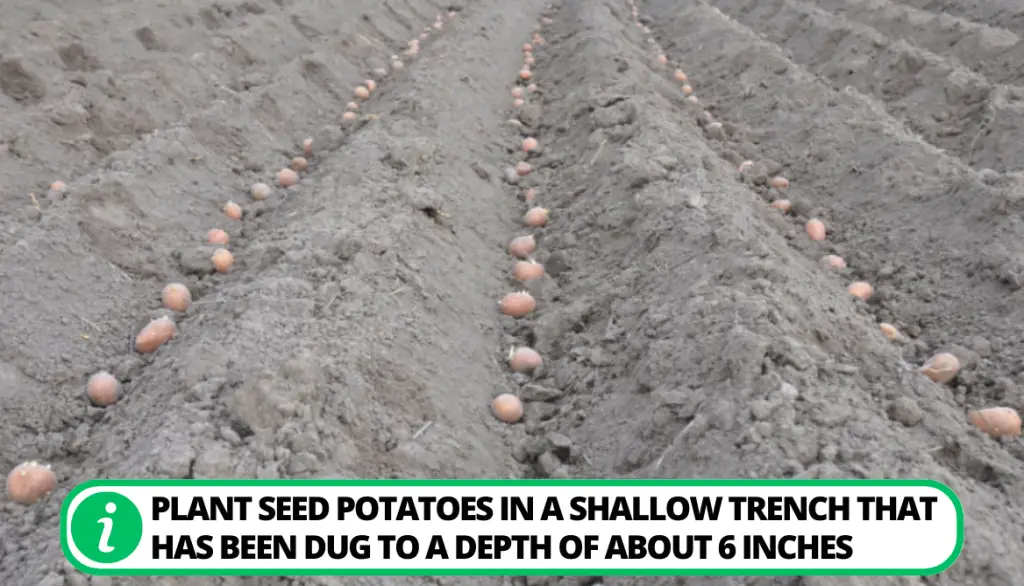
For further help, please take a look at this informative video.
2. Scatter Method
This method is a little different compared to the one shared above. The scatter method includes the use of fertilizer. Here’s what you need to know:
- A few inches of fertilizer can be placed directly on top of the seed potatoes since this is the method used by some gardeners.
- As your plants develop, you can continue to add fertilizer on top.
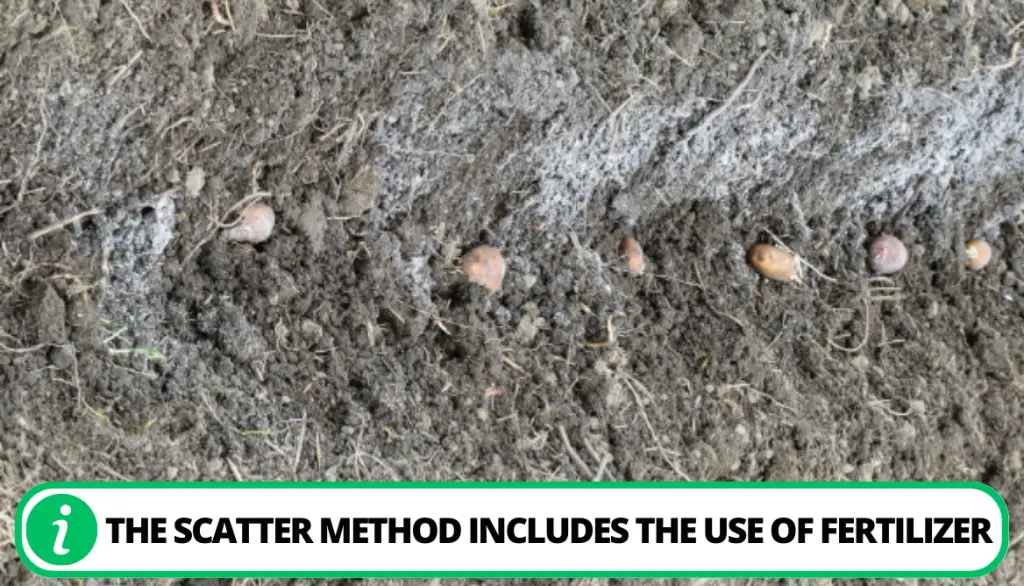
4 Common Diseases That Plague a Potato Plant
All potato varieties, even distant ones like the potato vines, are plagued by a few common diseases. Let’s learn about them and how to about them while planting potatoes below:
1. Beetles and Aphids
Plants can be defoliated by insects like beetles and aphids. Keep an eye out for them towards the beginning of the season, before they cause any big disruptions. Look at the backs of leaves for beetle problems like Colorado potato beetle eggs and larvae. These are often easy to take off by hand.
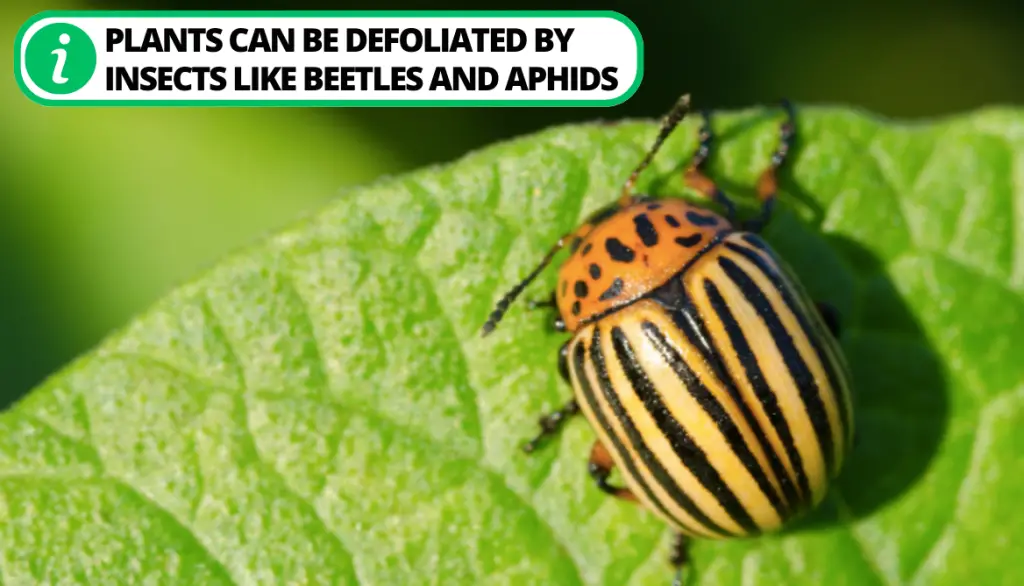
2. Wireworms
Sub-surface attacks by wireworms are a real threat. If you want to keep them away from your potatoes, the plants should be rotated and planted in different areas each time.
3. Scab
Potatoes frequently fall victim to scab, a condition that can manifest as either deep holes or elevated, corky patches on the epidermis. Scabs may be managed by reducing soil pH. Excess moisture in the soil should also be avoided in the 2 to 6 weeks following tuberization to avoid scabs.
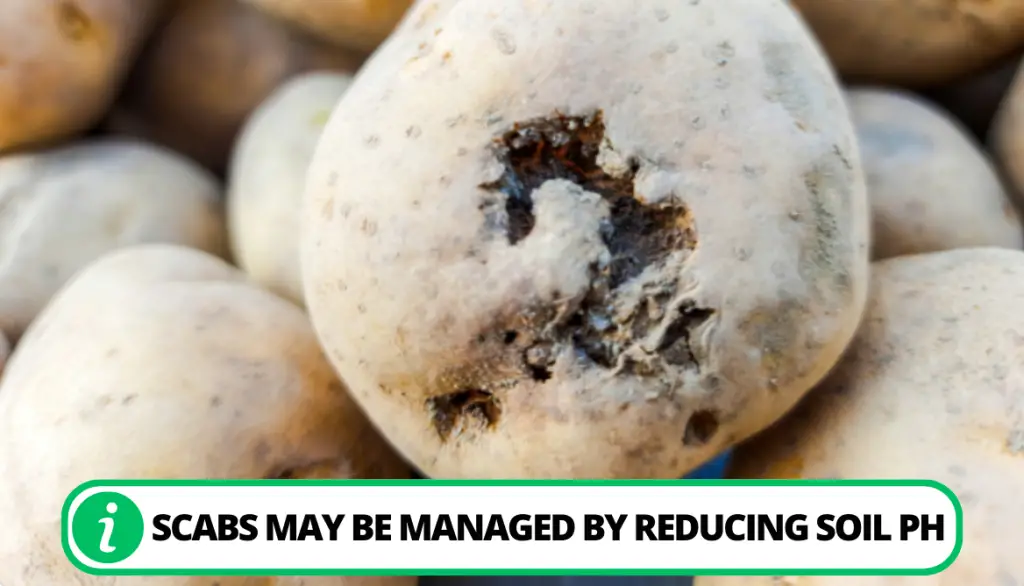
4. Late Blight
Foliage affected by late blight becomes dark and rotten. Get rid of or burn the yard waste. Please don’t throw it in the compost. Waiting a few weeks before harvesting the potatoes is recommended. Use only certified disease-resistant seed potatoes to prevent this issue.
FAQ
Why do potatoes need sunlight to grow?
Under the ground, potatoes develop into edible tubers, just like the tubers of other root crops. But above-ground leaves require light, as photosynthesis is essential to grow potatoes as they provide nutrients for the tubers underground to grow.
What happens if potatoes get too much sun?
If potatoes get too much sun, it will result in high temperatures. This will eventually lead to potatoes turn green. In such conditions, the potato plant develops the toxin solanine which is dangerous and gives a bitter taste.
Do potatoes need darkness?
No, potatoes need full sunlight to grow best. But don’t expose them to too much sunlight as potatoes will turn green.
Do potatoes need a grow light?
Potatoes will require a grow light if they are being grown indoors or in a shaded area.
Can potatoes be stored in sunlight?
Potatoes cannot be stored in sunlight as this will cause the tubers to start turning green. When potato tubers are exposed to too much sun, they form “eyes” and begin to sprout, at which point they produce large quantities of the deadly alkaloid solanine.
Conclusion
Direct sunlight is critical to growing seed potatoes. Almost all varieties of potatoes require at least 6 hours of direct sunlight daily for optimal growth. While potatoes may germinate in complete darkness, they’ll need exposure to bright light to grow.
As the shoots emerge from the ground, the leaves need light to begin photosynthesis. If potatoes do not receive enough sunlight photosynthesis won’t occur and the tubers won’t grow healthy. Moreover, these plants can catch many diseases and pests, such as blight, which can ruin your crop. Opt for preventive measures such as disease-resistant seed potatoes to save your own potatoes.
How do you prefer growing potatoes? In full sun or partial shade? Let us know in the comments.
- How to Get Potatoes to Sprout Eyes: Detailed Growing Guide with 3 Options - July 31, 2023
- Weight of a Medium Potato: Revealed in Detailed Guide - July 29, 2023
- Maris Piper Potatoes: 9 Substitutes You Should Know About - July 27, 2023
Hello! I’m Jessica Zander, a garden coach and consultant based in the Boston area (zone 6b), offering virtual consultations across the country and Canada.
I’ve been passionate about gardening since the early 1990s, and in 2022, I launched You Can Do It Gardening to empower individuals to feel more confident in their gardening endeavors.
Following a 30-year career in nonprofit finance and operations, I transitioned out of that field in mid-June of 2023 due to the growing demand for coaching services. Interestingly, my years of presenting financial statements to boards and finance committees proved to be valuable experience for teaching people about gardening! I enjoy sharing skills, providing guidance and suggestions, and collaborating efficiently with clients to make significant improvements to their outdoor spaces, both small and large. I also regularly teach at the Arlington Continuing Education and Cambridge Adult Education.
My approach is direct and practical, akin to Mary Poppins, but tailored to your garden. Clients find satisfaction in saving money and taking pride in their own gardening achievements.

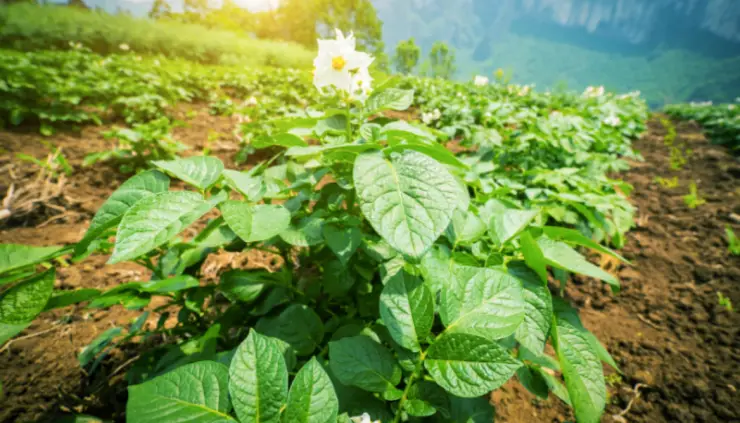

Add comment